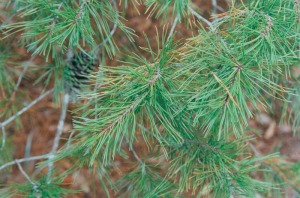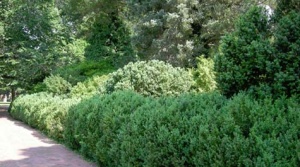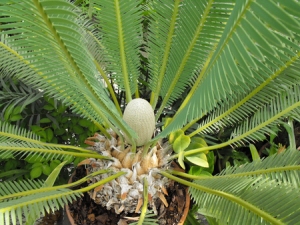
Pinus clausa leaves
A: The sand pine, Pinus clausa, is a native pine tree and a relative of the common Florida slash pine. The sand pine has shorter needles, is shorter in height than its cousin and does not live as long as the slash pine. Because it does not produce tall trunks, it is of little importance to the lumber industry except for occasional usage for pulp. However, it is very valuable to wildlife throughout the state. According to the Department of Agriculture, sand pines play an important role in the lives of more than 20 threatened or endangered species as these animals live in or utilize sand pine forests. In addition, sand pines provide cover and nesting sites for many songbirds, woodpeckers and squirrels. Small mammals and rodents feed on the seeds which attracts large birds of prey. Sand pines tolerate most any kind of soil conditions except wet sites. Although, as its name implies, sand pines are found most often in coastal, sandy soils. It can grow in most any type of light condition and is highly salt (aerosol) and drought tolerant. Sand pines grow slowly with normal heights of 20 – 40 feet. The needles of the sand pine are 2 – 3.5 inches long which is short when compared with the slash pine’s needle length of 7 – 12 inches. Sand pines are not known for having a straight trunk and often will take on a “bonsai” look by growing more limbs on one side of the tree. This does not mean there is anything wrong with the tree. It has few diseases problems which should make it a nice addition to landscapes along the coast as long as it is not over watered. The trees can be susceptible to bark beetles and sand pine sawflies. There are two varieties of sand pine, the Ocala, found in most areas of Florida, while the Choctawhatchee sand pine is found further north in the panhandle area of Florida. The only difference between the two trees is the cones. Ocala cones display a waxy covering and stay closed whereas the Choctawhatchee cones open up to expose the seeds. The Choctawhatchee sand pines are often grown as Christmas trees. We just added the sand pine to our large demonstration garden at the James S. Page Governmental complex. We will need to give it a year or so to see if it can adapt to a more urban environment. https://edis.ifas.ufl.edu/pdffiles/ST/ST45800.pdf



